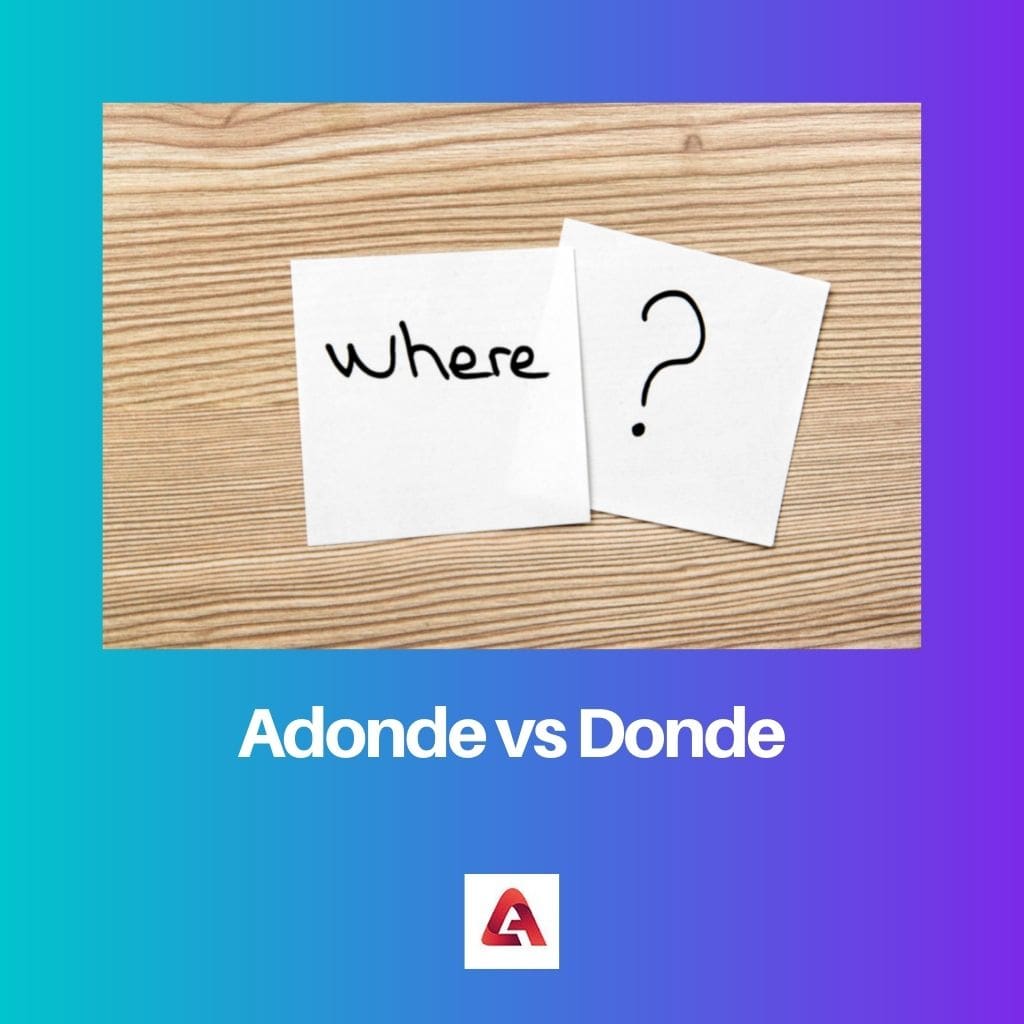Learning something new is always exciting and brings a change in life. Most people try to learn new things daily, which keeps them happy.
For a few people learning new languages is a hobby. Some people learn a new language so that they can go on tour.
Students learn a new language to get admission or complete their studies in other countries. There are some universities in which some subjects are taught in the local language.
So, it is mandatory to learn a new language.
In other cases, when we meet new people online or while working, we must communicate with them in their language to make the work faster. Spanish is a very interesting language with an attractive accent, and the meaning and pronunciation are interesting.
Key Takeaways
- “Adonde” is a Spanish word used to ask or indicate the destination of movement, translating to “to where” or “where to” in English.
- “Donde” is another Spanish word that asks or indicates a location, translating to “where” in English, but does not imply movement.
- Both “adonde” and “donde” are used to ask or indicate locations in Spanish, but “adonde” implies movement towards a destination, while “donde” indicates a stationary location.
Adonde vs Donde
“Donde” simply means “where” in English and is used to ask or indicate a location. For example, “¿Dónde está la biblioteca?” means “Where is the library?”. “A donde” is used to indicate a direction or destination, and translates to “to where” in English. It is used when talking about travel or movement towards a specific location.

Comparison Table
| Parameters of comparison | Adonde | Donde |
|---|---|---|
| Meaning | To where | Where |
| Usage | Destination | Object |
| Followed by | Verb | Noun or Preposition |
| Grammar | Adverb | Pronoun |
| Reference | Direction | Location |
What is Adonde?
Adonde and donde are variants. The word adonde refers to a location.
That means where to. For example, if someone is going somewhere, we can ask them adonde in Spanish. This means where you are going.
This word indicated the destination. If someone is going on a tour, we can use this word.
This word is also used to express where we are going. So, when we say or ask for any destination, the word adonde is used.
Adonde is all about the movement of someone or something. For example, we can use this word to ask where did the cat go?
In simple words, wherever the phrase adonde is used, the statement contains where and go. The examples show us where to use the word adonde in a situation or during translations.

What is Donde?
Donde refers to the location. While using this word, we use words like where and is.
For example, we can use this word to ask someone where that thing is. It can be anything or anyone, but the word’s usage is the same.
Sometimes to ask about a particular object or anything or even a person’s location, we use this word. For example, if we want to ask where the books are, we use donde.
This is a pronoun, and this follows with a noun or even with a preposition. Donde uses the pronoun it to make a meaningful sentence.
In any sentence, if we are not using any direction or movement about any object or a person, we can use donde. From the examples, we can see where to use donde word.

Main Differences Between Adonde and Donde
- The word donde means it explains an object or a thing. So, we can use this word to know where a particular item is. Where is the book is an example of donde. At the same time, adonde is all about a location or a destination. It is sometimes referred to for directions also. Where are you going to is an example of this word adonde.
- The word adonde is followed by verbs like going, coming and others. For example, we can say where we will use the word adonde. The word donde comes with a noun, and an example can be given here regarding where we should meet. So, verbs and nouns must be checked.
- We can also use adonde for surprise expressions. Sometimes in the case of disappointment, we can use the word adonde. The word donde will speak about the location of a person also. These words, adonde and Donde, are based on the intention with which we speak and use them.
- These two words are not synonyms, and from the grammatical function, adonde can be used as an adverb, whereas the word donde is used as a pronoun. So, these must be considered during sentence formation to make the sentence meaningful without confusion about these two words.
- If we ask where you will be going for Christmas, then the word we use here is adonde, and the phrase donde is used in an example like where is my car? This makes a clear sense that donde is all about location, and adonde is all about the direction or destination.
- Donde is used when the question or statement is about where and the word adonde is in a sentence to find out where to or to where. As these two words are questions, one is about the direction, and the other is about location. So, the whereabouts of anything is using adonde.


The article’s discussion of adonde and donde is both engaging and informative. It’s a valuable resource for those seeking to enhance their understanding of Spanish.
This article provides a comprehensive explanation of adonde and donde, making it easier for language learners to grasp the nuances of these terms.
The article does a great job of outlining the key takeaways about adonde and donde. Learning a new language can be a rewarding experience.
I love that this article not only defines adonde and donde, but also offers practical examples to illustrate their usage. It’s incredibly informative and well-written.
The main differences highlighted between adonde and donde are very enlightening. It’s wonderful to see such detailed explanations.
Learning about adonde and donde has certainly piqued my interest in the Spanish language. I appreciate the depth of information in this article.
I found the comparison table to be very helpful in understanding the differences between adonde and donde. It’s a clear and effective way of presenting the information.
This article perfectly explains the difference between adonde and donde. It’s thorough and insightful, providing a great perspective on learning new languages.
The distinctions between adonde and donde are articulated with great clarity in this article. I appreciate the depth of insight provided.
This information is very useful, especially for those learning Spanish. It’s great to have clarification on the usage of adonde and donde.